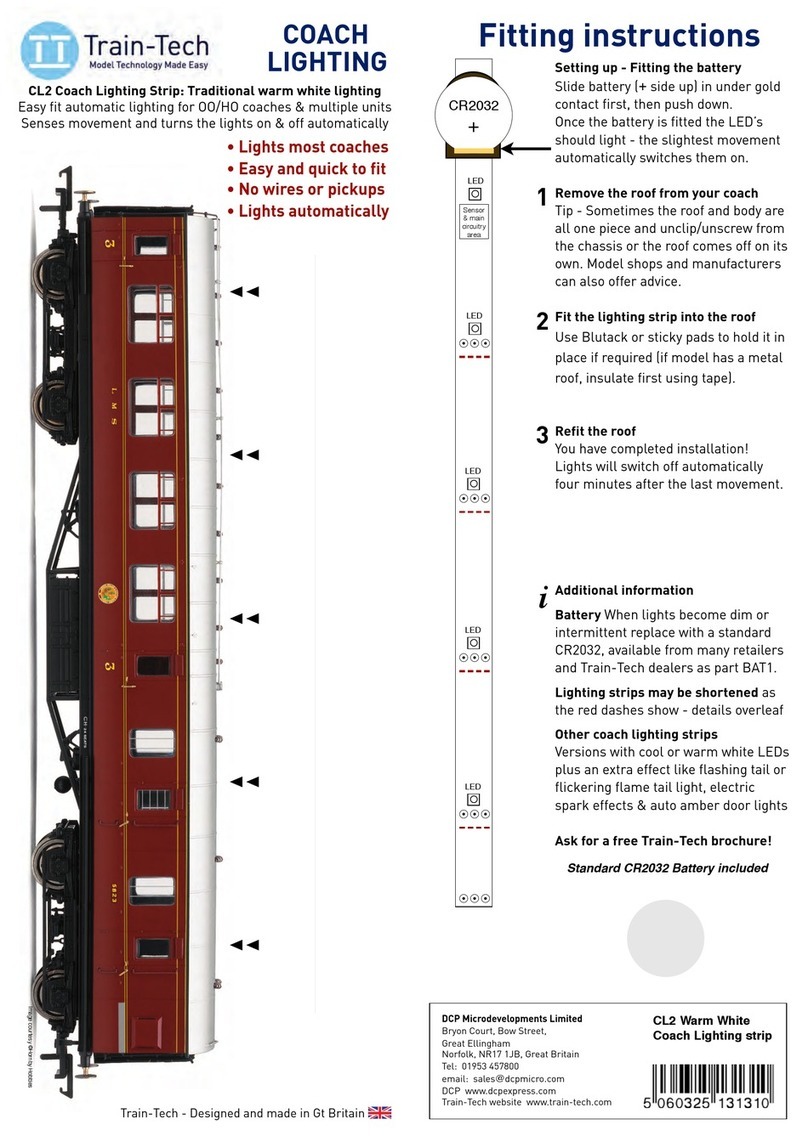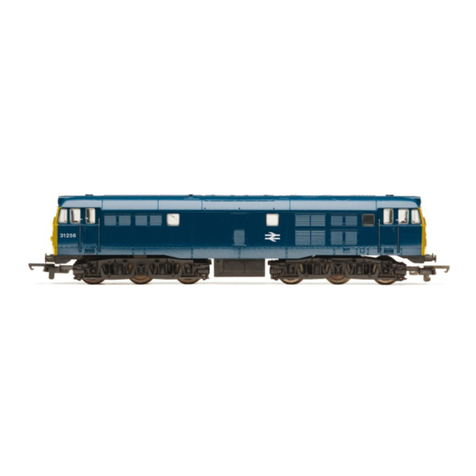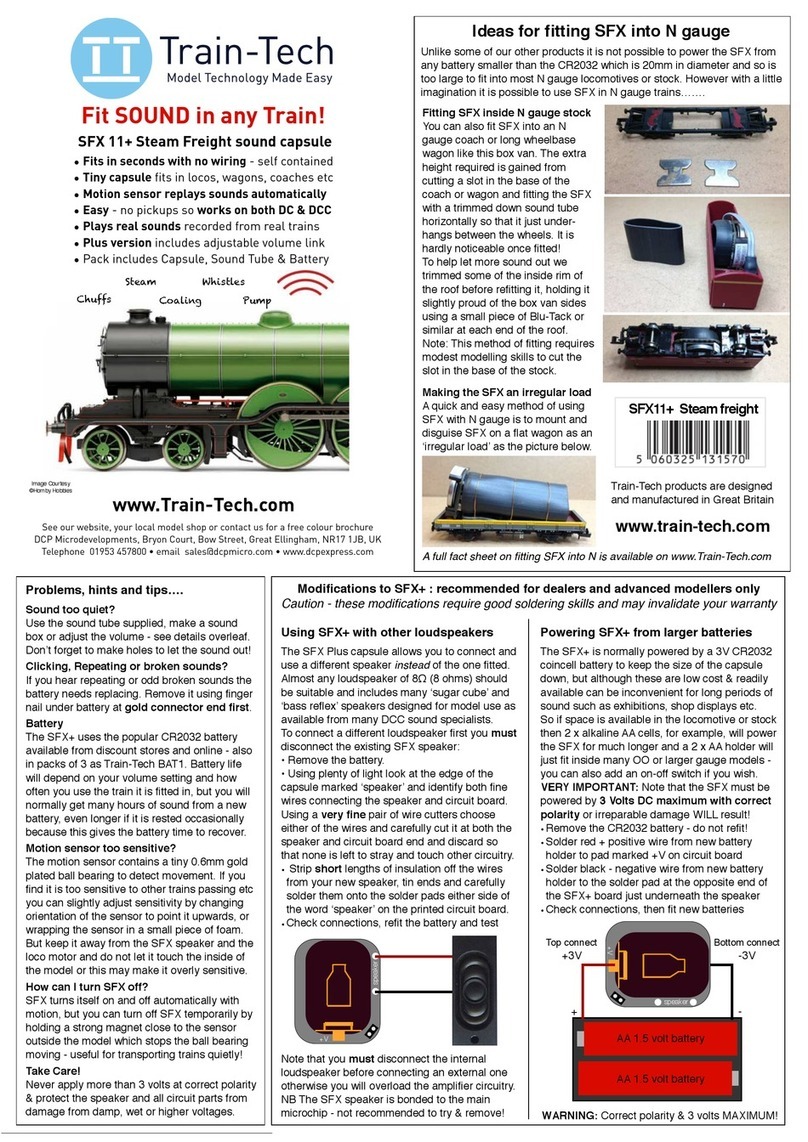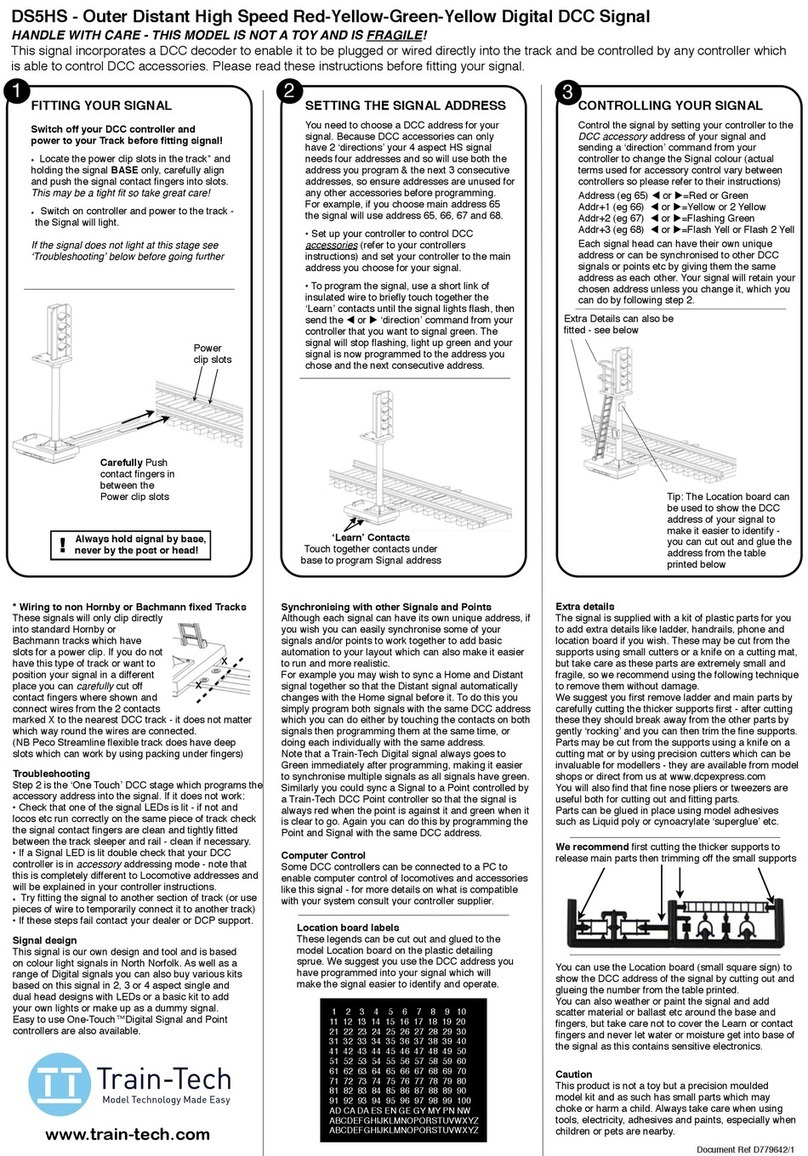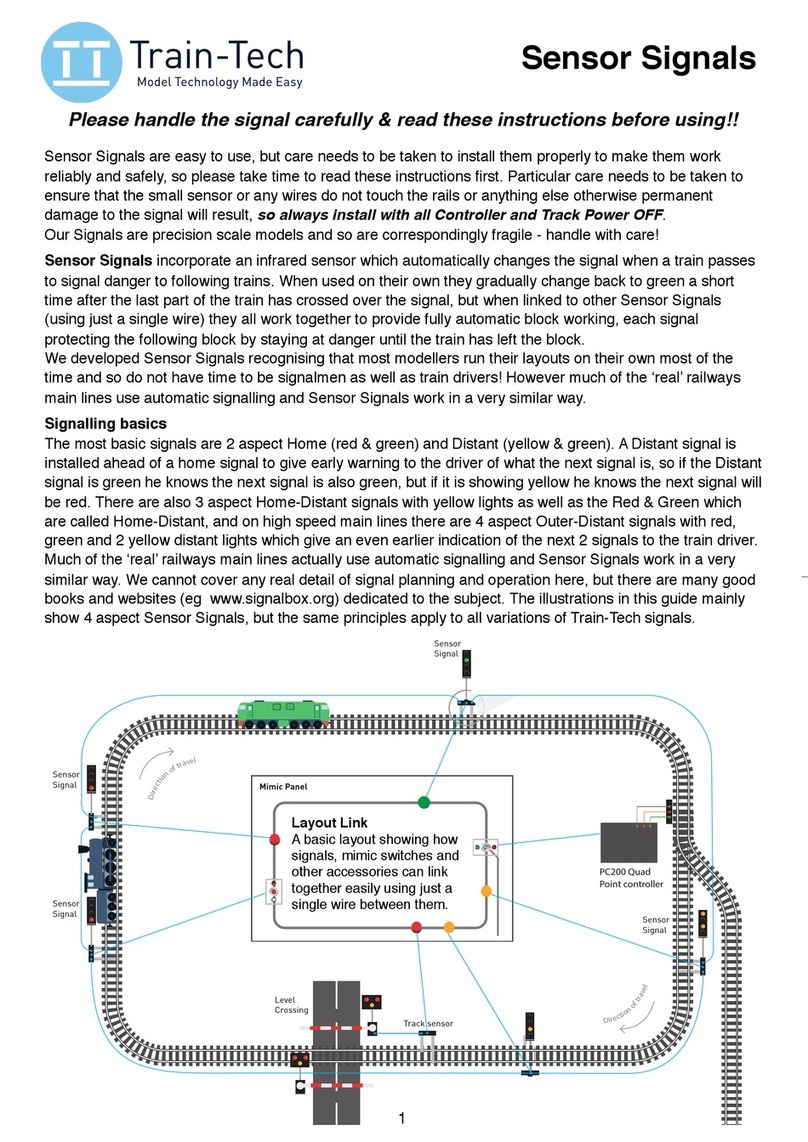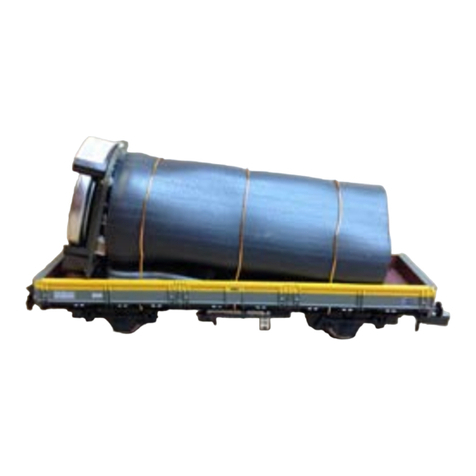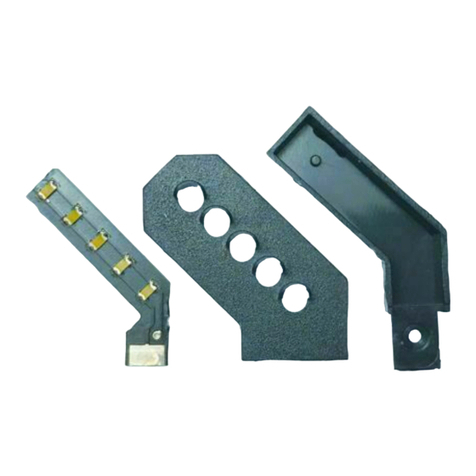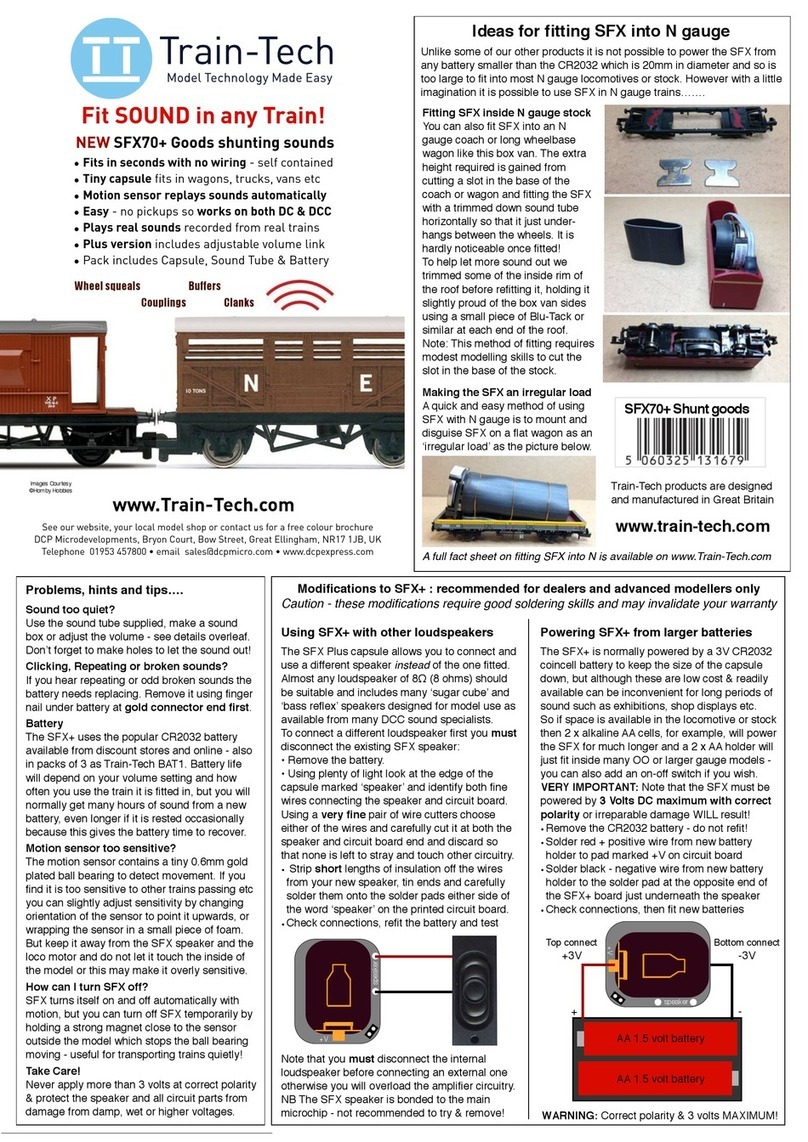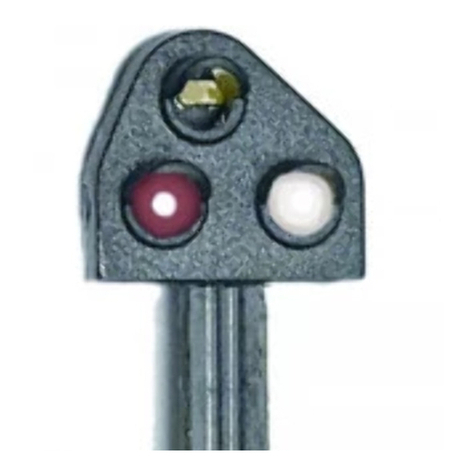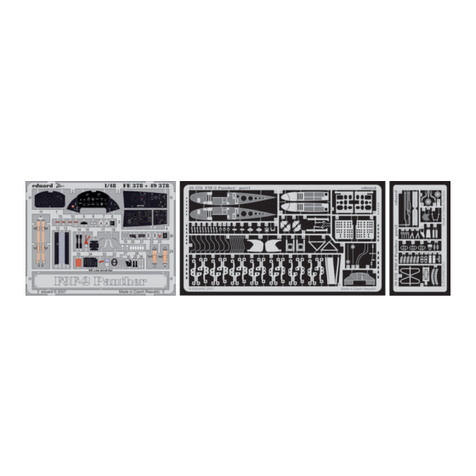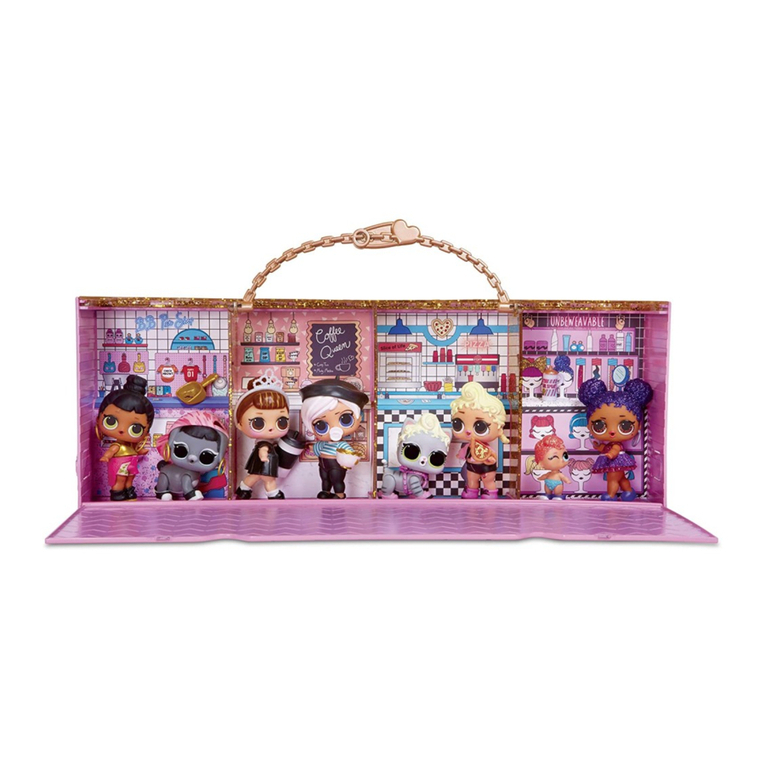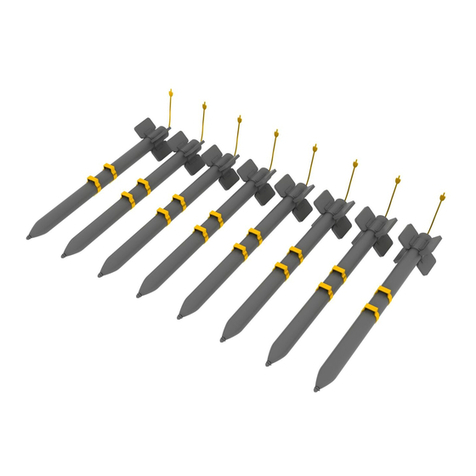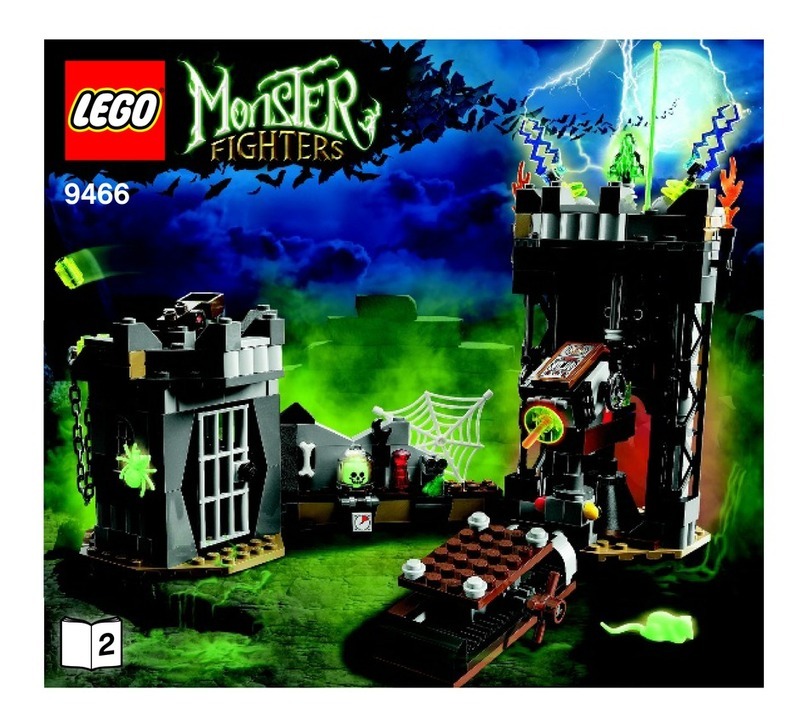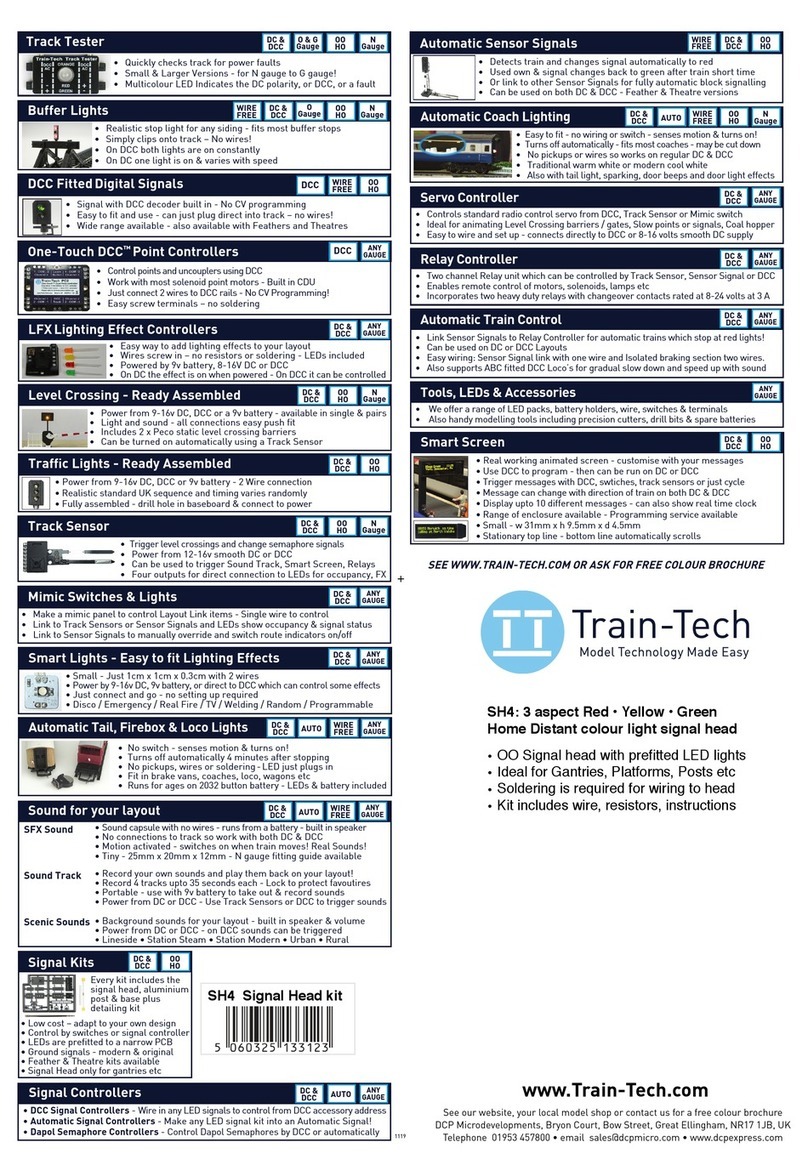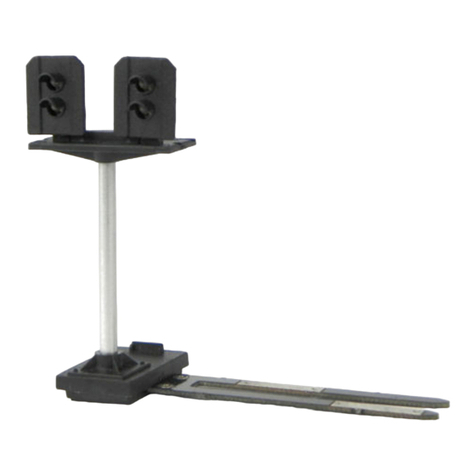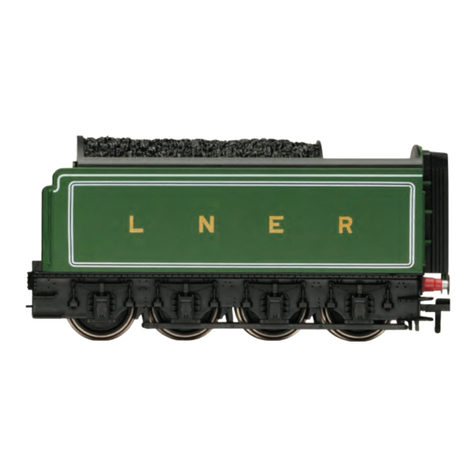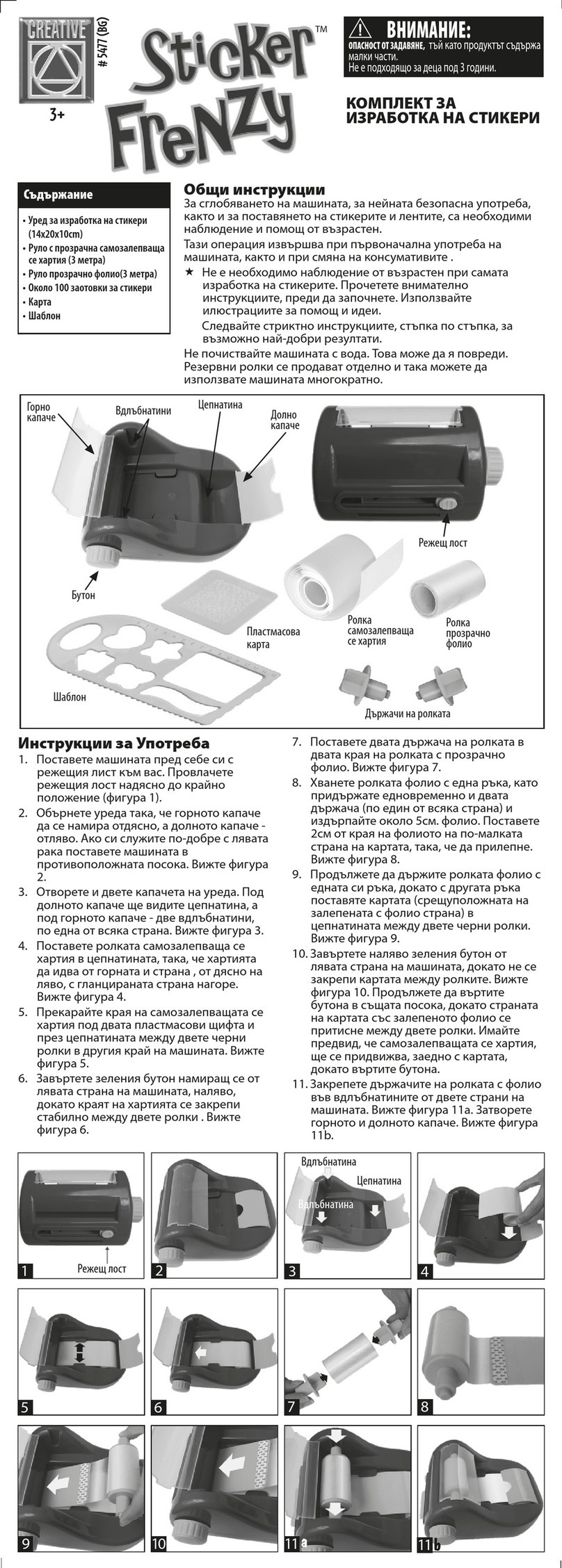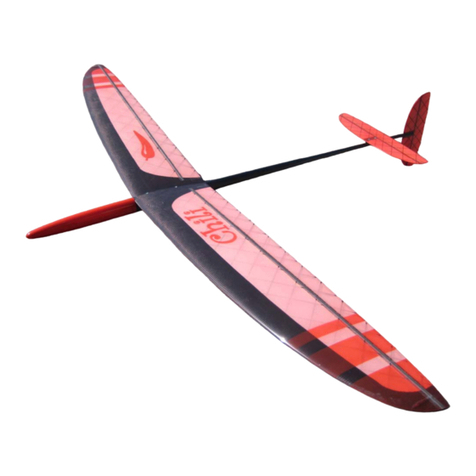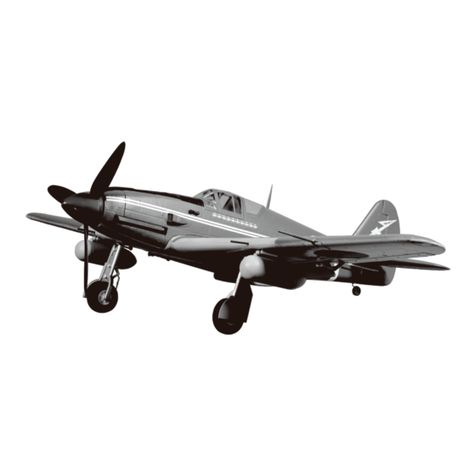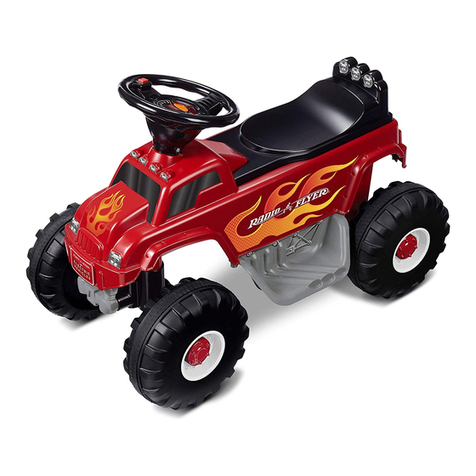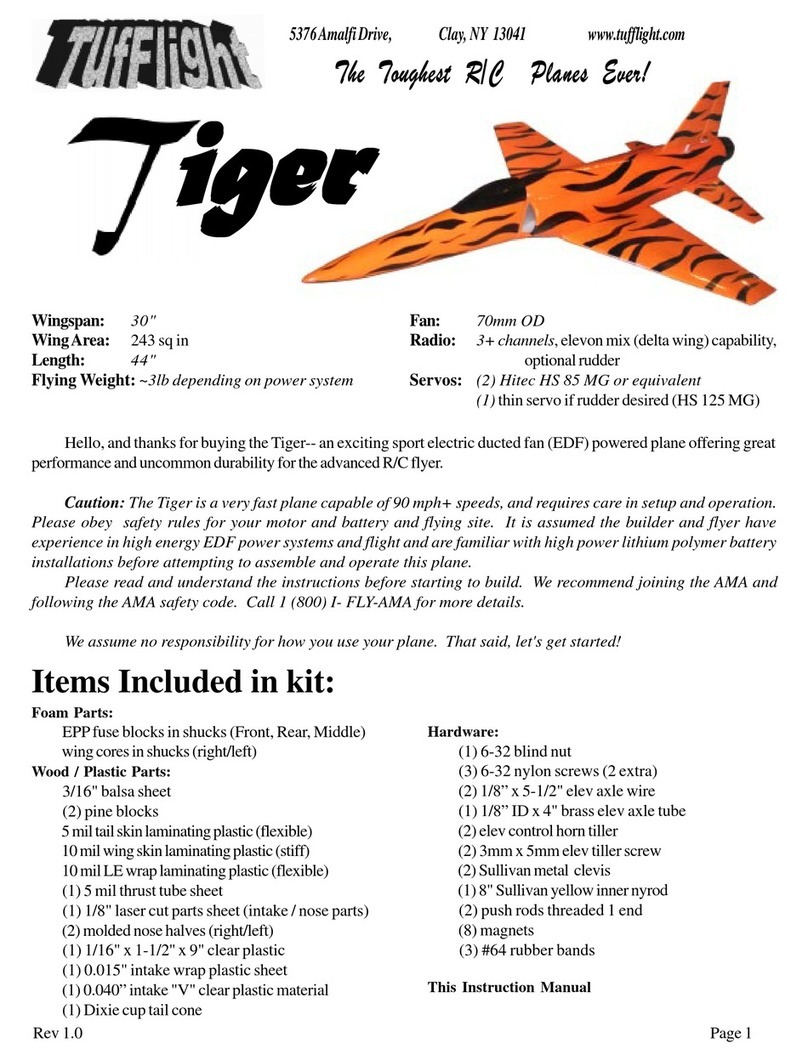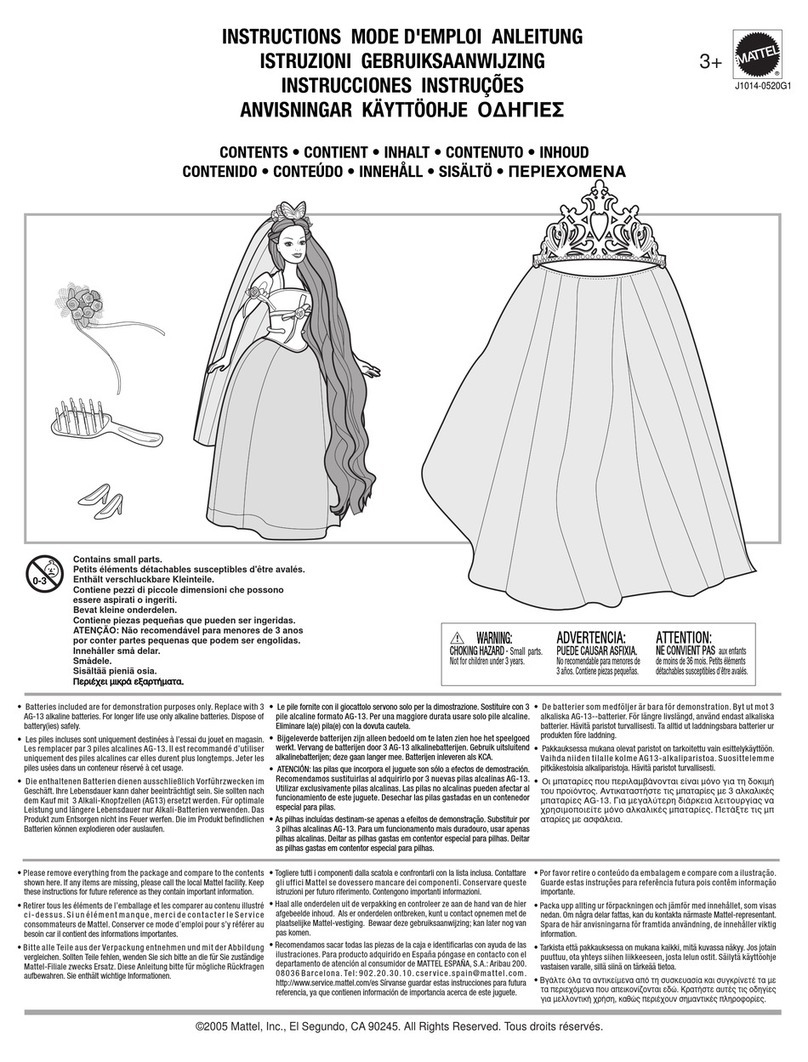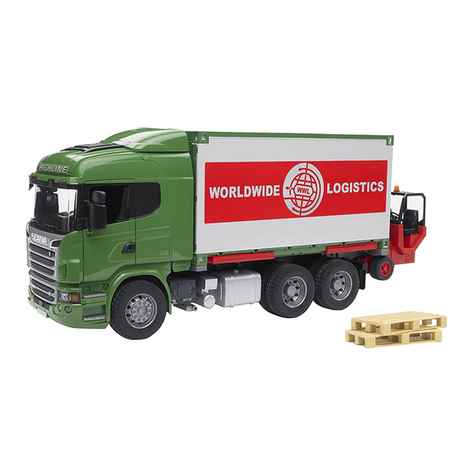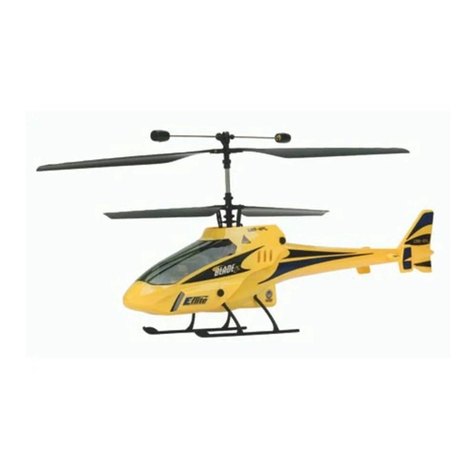
Common -
Red +
Yellow 1 +
Green +
Yellow 2 +
Before gluing the front and rear
head cases together around the
PCB, decide which way up the
signal is going to be mounted so
that you fit the cable exit slot of the
rear cover in the right position.
If you have also fitted a theatre or
feather route indicator use the rear
casing with slots at both ends.
1kΩresistor
in series with
each colour
Wiring the signal head
The LEDs are presoldered to the head PCB and
connection to them is made via the solder ‘pads’ on
the back of the PCB. Your signal head is supplied
with fine coloured wires which we suggest using for
the connections, however be careful to only apply a
small amount of solder to the joint to keep it slim,
otherwise the rear cover may not fit flush.
Important: Make the solder joints quickly as
excessive heat can damage or remove the LEDs
Controlling the signal
Before connecting the signal head to power, it is
important to note that the LEDs are only rated at
low voltages of around 2 volts, so you must
always use resistors in series with the signal head
LEDs and a 12-16 v supply unless using it with a
Train-Tech Signal Controller with built in resistors.
Control from DC using switches
Using LEDs with model railways
The lights used on this signal head are called LEDs.
LEDs are really useful lights which, unlike their
conventional filament predecessors, are robust, low
power and if used correctly run cool and can
effectively last forever.
But there are some important considerations when
using LEDs. Firstly LED stands for Light Emitting
Diode and a diode is an electronic component which
only works in when power is applied in one specific
direction, so they always need to be fitted the
correct way round to work correctly.
Also most standard miniature LEDs a modeller will
use only need very small amounts of power, so the
current flowing through the LED must be limited and
this is usually done by a resistor as supplied in this
kit. On the usual 12-16 volts DC supply a railway
modeller uses a 1kΩ(one thousand ohms) will limit
the current to around 10-14mA (mA is thousandths
of an amp) which is ideal for most LED’s.
Note you should only ever use LEDs on a DC (direct
current) supply and never an AC (alternating
current) supply because although the LED may
appear to work properly constant reversal of voltage
using AC will eventually damage or shorten its life.
Train-Tech offers packs of various LEDs for
modellers and again these always come with both
instructions and suitable resistors for using them on
a standard Model Railway DC supply or non Train-
Tech DCC controllers.
Using Signals with Train-Tech DCC controllers
Train Tech offer various LED controllers including
the SC1 and SC2 DCC signal controllers which
allow signals such as this to quickly and easily
connect to DCC layouts for control by Digital
controller or computer. They are quick to connect
needing no resistors or soldering and set up in
seconds with no programming of CV codes.
As well as Signal Controllers, Train-Tech also makes
a range of LFX LED lighting controllers which work
on both DC and DCC and offer effects to simulate
level crossings, welding, traffic lights etc - again
resistors are built into all of the LFX units and so
LEDs connect directly to them.
See www.train-tech.com for full details.
SH6 Outer Distant Red-Yellow-Green-Yellow self assembly signal head kit
CAUTION - ALWAYS SWITCH OFF POWER TO YOUR LAYOUT BEFORE CONNECTING OR DISCONNECTING ANY ACCESSORIES
This Self assembly signal head kit contains an LED Light circuit board, head casing and resistor to make a Colour Light signal designed for
use on OO/HO gauge model railways - please read these instructions before assembly and connecting to power.
Introduction
Contents
1 Signal Head LED PCB (printed circuit board)
1 4 aspect front light head
1 4 aspect rear cover for standard signal
1 4 aspect rear cover with feather / theatre slot
4 1KΩresistor (Colour:Black Brown Red Gold)
5 Fine coloured wires for the connections
1 Instruction leaflet
Recommended tools (not included)
Fine tip soldering iron: 18 - 25 watt, solder
Sharp craft knife or cutters to trim mouldings
Adhesives to suit plastic (eg liquid poly)
Magnifier
Thank you for purchasing one of our Colour
Light Signal heads. They are ideal for mounting
on gantries or on your own signal posts and will
match the standard Train-Tech signals which
are available as kits, DCC fitted or Automatic
Sensor signals.
You can either control this signal head using
conventional lever frame or toggle type
switches or connect it to a DCC decoder to
control it from a digital controller or computer.
Or you can connect it to the SC100 Automatic
signal controller which has a built in sensor and
controls an LED signal wired to it, either on its
own or as part of a block signal system.
Full details in the free Train-Tech brochure or
online at www.train-tech.com.
Take extra care when using
tools and adhesives.
Wiring advice
Electrical connection to the signal is via copper
‘pads’ on the back of the LED signal head PCB.
These pads are made from thin copper bonded to the
fibreglass and then ‘tinned’ to ensure reliable and
easy connection.
The best method of connection is by soldering wires
onto these pads using a small tip soldering iron of
18-25 watts, taking care not to apply heat for too
long. Note that if you pre-tin the wires before
soldering them onto the pads you will find that the
solder will flow much more easily to make a secure
joint quickly.
Make sure you only put a small amount of solder on
the pads as the rear cover of the signal head comes
quite close.
Finally do not forget to fit a resistor in series with the
signal head as shown before powering up your new
signal!
Construction advice
The plastic front and back covers in this kit is
made of a blend of mainly ABS which is slightly
more forgiving and less brittle than the polystyrene
often used for plastic kits. However it can be glued
together using most general model kit adhesives
such as Humbrol or Revell Liquid Poly - be sure to
follow instructions for application and safety
supplied with the adhesive.
You can use cynoacrylate ‘superglue’ but be
careful to ensure it has plenty of air while it cures
otherwise it can leave a cloudy white ‘plume’
around the joints.
Mounting the signal head
The signal head can be fixed to a gantry, post,
bridge etc using a suitable adhesive.
Before fixing the head in position, plan where you
can going to run and conceal the connecting wires
- it may help to paint the wires before fitting to help
disguise them in areas which can be seen.
- Negative
+ Positive
12-16 volts DC
power supply
R
Main
Switch
1 2 3 4 5 6 7 8 9 10
11 12 13 14 15 16 17 18 19 20
21 22 23 24 25 26 27 28 29 30
31 32 33 34 35 36 37 38 39 40
41 42 43 44 45 46 47 48 49 50
51 52 53 54 55 56 57 58 59 60
61 62 63 64 65 66 67 68 69 70
71 72 73 74 75 76 77 78 79 80
81 82 83 84 85 86 87 88 89 90
91 92 93 94 95 96 97 98 99 100
AD CA DA ES EN GE GY MY PN NW
ABCDEFGHIJKLMNOPQRSTUVWXYZ
ABCDEFGHIJKLMNOPQRSTUVWXYZ
Location board labels
These legends can be cut out and located near to
the signal. If using DCC to control your signal head
we suggest you use the address you have
programmed into your signal decoder which will
make the signal easier to identify and operate.
Y1
Wiring suggestion using two
switches; one for the main
red-yellow-green control and the
other for the second yellow.
Use a resistor in series with each
colour so that the LEDs do not dim
when the second yellow comes on.
Document Ref D779684/4
4 aspect head rear PCB connections
Common - negative
(note Common pad is larger than the others)
Feather/Theatre* LED +
Yellow 2 LED +
Green LED +
Yellow 1 LED +
The large pad is the common negative (-) terminal
and the other pads are terminals for the colours.
*There is also an extra pad for an optional feather
or theatre which may be fitted to the signal head.
This should be soldered to the larger common pad
on the back and the small square solder pad on the
LED side - be careful NOT to touch the nearby LED
connection! (Train-Tech Part No LK1, RK1, TK1)
Fitting the casing around the head
Control from Signal Controllers
Signal heads can also be connected and
controlled by DCC Signal Controllers like the
Train-Tech SC2. The SC100 is an Automatic
signal controller which has a built in train sensor
and controls 2, 3 or 4 aspect LED colour light
signal wired to it, either on its own or as part of a
block signal system with other automatic signals.
Yellow 2
Green
Yellow 1
Red
Yel l o w 2
Switch


